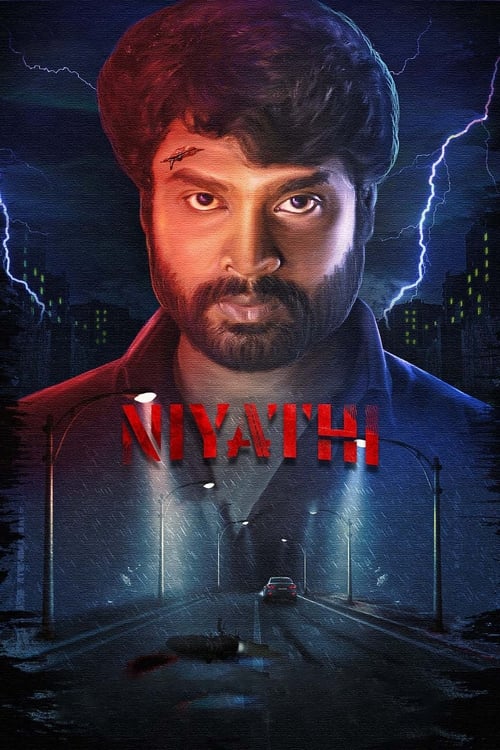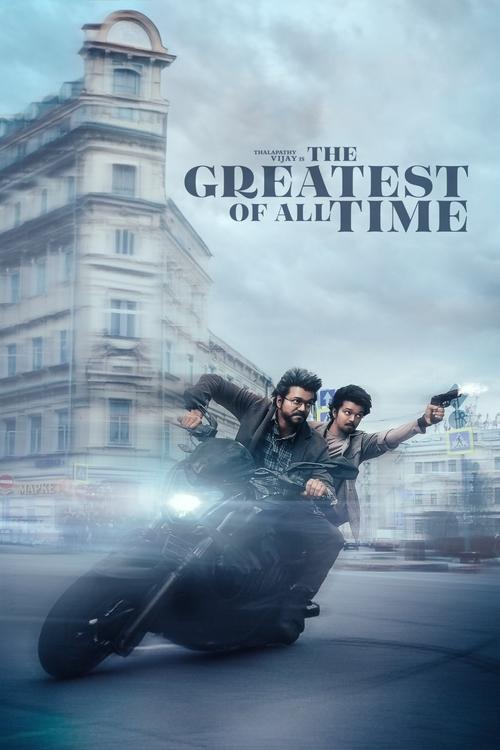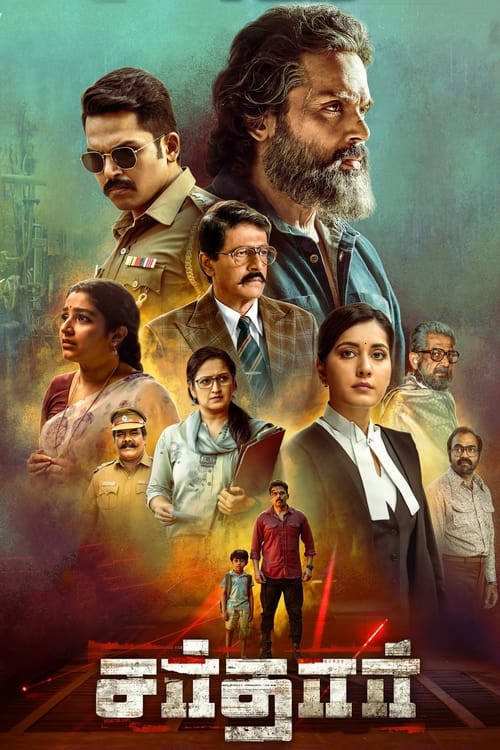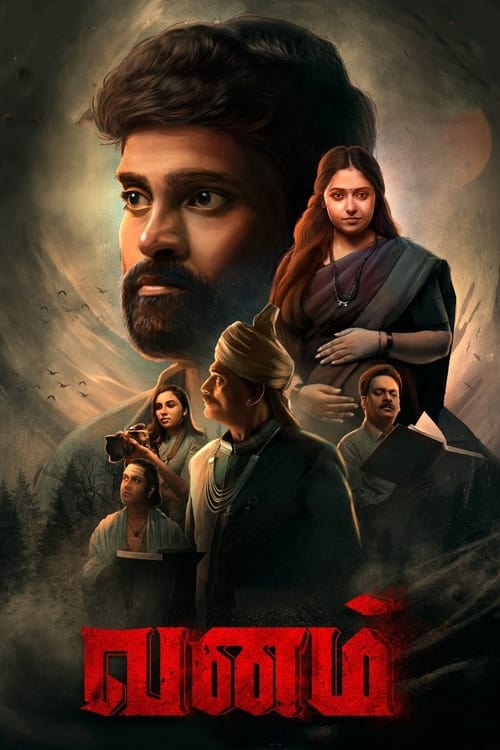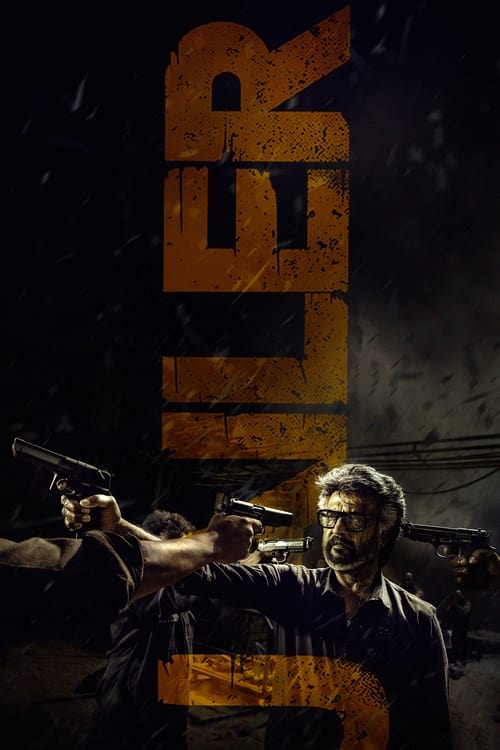
Ask Your Own Question
What is the plot?
The film Nitham Oru Vaanam opens in the bustling city of Bhubaneswar, where Arjun, a young man grappling with Obsessive-Compulsive Disorder (OCD), sits alone at a bus stop. His demeanor is withdrawn, his eyes clouded with sorrow. Arjun carries the heavy weight of heartbreak--the wedding he was preparing for has been abruptly called off. His fiancée, Janani, has chosen to reunite with her ex-boyfriend, shattering Arjun's hopes and plunging him into deep depression. As he waits for his bus, he begins to share his story with Shubha, a cheerful and independent solo backpacker who is passing through. Their meeting is serendipitous, a crossing of two wounded souls on different paths but with shared pain.
Arjun's voice is low, tinged with bitterness and loss. He recounts how Janani seemed to understand him, how their relationship blossomed until the last moment when she left him. Shubha listens intently, her own history of heartbreak silently mirrored in her eyes. She has been in a relationship for two years, only to be dumped when her boyfriend married another woman. She has never mustered the courage to confront him, a lingering wound that gnaws at her. This shared vulnerability forms the fragile foundation of their connection.
Arjun's doctor, aware of his fragile mental state, prescribes an unusual remedy: to read two short stories Janani had written about two couples--Veera and Meenakshi, and Mathivadani (Mathi) and Prabhakaran (Prabha). These stories, meant to help Arjun process his pain, become the narrative threads that weave through the film, each revealing different facets of love, loss, and healing.
The first story transports us to a small-town movie theatre, where Veera makes a striking, almost cinematic entrance. He is a typical rowdy student with a golden heart, fiercely protective of his sister. When he confronts and physically drives away men harassing her, the theatre erupts in a mix of fear and admiration. Veera's rough exterior conceals a deep capacity for love and support.
Meenakshi, the heroine of this tale, initially appears to be a timid college girl, but the story soon reveals her as a basketball prodigy, far better than Veera himself. Her father's rigid sense of "maanam" (honor) forbids her from playing the sport, a reflection of traditional societal constraints. Veera, however, stands by her side, cheering her on from the sidelines, embodying a rare and refreshing portrayal of a man who celebrates his partner's strength and independence rather than feeling threatened by it. Their romance unfolds gently, emphasizing mutual respect and personal growth rather than melodrama.
The second story arc shifts to Mathivadani, or Mathi, a carefree young woman who dreams of a love marriage. On the eve of her arranged wedding, she runs away, crossing paths with Prabhakaran, a man who has consumed poison in despair over a failed love. Mathi admits him to the hospital, where her father arrives, demanding that Prabhakaran tie the wedding thread--the mangalsutra--around Mathi's neck, enforcing traditional marital expectations. Just as Prabhakaran is about to comply, Mathi suddenly falls unconscious, her nose bleeding, and the story ends abruptly, leaving their fate ambiguous. This unresolved conclusion symbolizes the complexities and sometimes harsh realities of love and societal pressures.
Back in the present, Arjun and Shubha's journey intertwines with these stories. Arjun, initially consumed by his OCD and depression, begins to transform. The tales of Veera-Meenakshi and Mathi-Prabhakaran open his eyes to the nuances of love--its challenges, its possibilities, and its capacity for healing. He starts to appreciate the small joys in life, letting go of his bitterness. Shubha, too, finds strength in Arjun's companionship, gradually confronting the pain of her own past.
Their emotional journey culminates when Arjun takes Shubha to her ex-boyfriend's house. The confrontation is raw and cathartic. Shubha slaps her ex, her anger unleashed after years of silence, and in a symbolic act of defiance, she breaks his car. The ex-boyfriend's reaction is one of fury, and he chases them in a tense but non-violent pursuit. It is during this chase that Arjun, emboldened by his own healing, confesses his love to Shubha. She reciprocates, and together they run away, leaving behind their past wounds and embracing the possibility of new beginnings.
Throughout the film, visual and emotional moments are vivid and poignant. Arjun's compulsive rituals and anxious glances contrast with Shubha's carefree wanderlust. The small-town movie theatre bursts with energy during Veera's heroic stand, while the hospital scenes are charged with tension and uncertainty. The slap and car-breaking scene crackles with raw emotion, a release of pent-up frustration and reclaiming of agency.
No characters die in the film; Prabhakaran's poisoning attempt ends in survival, and the other confrontations resolve without fatal outcomes. The film's climax is not one of tragedy but of emotional breakthrough and hope.
In the final moments, as Arjun and Shubha escape together, the sky above them seems vast and open--a metaphor for the endless possibilities that life holds beyond heartbreak. Their story, like the stories Arjun read, is one of second chances, resilience, and the courage to embrace love anew.
What is the ending?
In the ending of "Nitham Oru Vaanam," the protagonist, a man named Arjun, comes to terms with his past and the choices he has made. He reconciles with his estranged father, leading to a moment of emotional closure. The film concludes with Arjun finding peace within himself, symbolized by a serene moment under the sky, suggesting hope for the future.
As the film approaches its conclusion, the narrative unfolds with Arjun standing at a crossroads in his life. He has been on a journey of self-discovery, grappling with the weight of his past decisions and the strained relationship with his father. The scene shifts to a quiet, reflective moment where Arjun is seen walking through a park, the sun setting in the background, casting a warm glow that signifies change.
In this pivotal scene, Arjun receives a phone call from his father, who has been trying to reach out to him throughout the film. The tension is palpable as Arjun hesitates, his internal conflict evident. He takes a deep breath, his heart racing, and finally answers the call. The conversation is fraught with emotion; both men express their regrets and misunderstandings. Arjun's father, with a voice filled with remorse, apologizes for the distance that has grown between them. Arjun, feeling a mix of anger and longing, listens intently, his eyes welling with tears.
As they talk, the camera captures close-ups of their faces, highlighting the raw emotions--pain, regret, and a flicker of hope. Arjun's father shares a heartfelt story from his own past, revealing vulnerabilities that Arjun had never seen before. This moment of honesty breaks down the walls that have kept them apart for so long. Arjun, feeling a surge of empathy, begins to understand his father's struggles, and in turn, he shares his own feelings of abandonment and hurt.
The scene transitions to a park bench where Arjun sits, looking up at the sky. The clouds part, and rays of sunlight break through, symbolizing clarity and hope. He reflects on the conversation, realizing that forgiveness is a two-way street. The emotional weight he has carried begins to lift as he acknowledges that both he and his father are flawed individuals trying to navigate their relationship.
In the final moments of the film, Arjun decides to visit his father. The journey is filled with anticipation and anxiety, but as he approaches his father's home, he feels a sense of determination. The door opens, and they stand face to face, the air thick with unspoken words. They embrace, a powerful moment of reconciliation that signifies a new beginning.
The film closes with Arjun and his father sitting together, sharing stories and laughter, the camera pulling back to reveal the vast sky above them. This imagery reinforces the theme of connection and the importance of family, suggesting that while the past cannot be changed, the future holds the promise of healing and understanding.
As the credits roll, viewers are left with a sense of hope, having witnessed Arjun's transformation from a man burdened by his past to one who embraces the possibility of a brighter future, surrounded by the love of family.
Is there a post-credit scene?
In the movie "Nitham Oru Vaanam," there is no post-credit scene. The film concludes its narrative without any additional scenes or content after the credits roll. The story wraps up with a sense of closure, focusing on the emotional journey of the characters and their resolutions, leaving no further plot developments or teasers for the audience to ponder after the film ends.
What motivates the main character, Nitham, throughout the film?
Nitham is driven by a deep sense of longing and a quest for self-discovery. His journey is fueled by the desire to reconnect with his past and understand the choices he has made in life. This internal conflict is portrayed through his interactions with other characters and his reflections on his relationships.
How does Nitham's relationship with his family evolve during the film?
Nitham's relationship with his family is strained at the beginning of the film, marked by misunderstandings and emotional distance. As the story progresses, he confronts his past and seeks reconciliation, leading to poignant moments of vulnerability and healing that ultimately strengthen their bond.
What role does the character of Anu play in Nitham's journey?
Anu serves as a catalyst for Nitham's transformation. Her presence challenges him to confront his fears and insecurities. Through their interactions, she becomes a source of support and inspiration, pushing him to embrace change and pursue his dreams.
What significant events lead to Nitham's realization about his life choices?
Key events include a series of flashbacks that reveal Nitham's past decisions, particularly regarding his career and relationships. A pivotal moment occurs when he faces a crisis that forces him to reevaluate his priorities, leading to a profound realization about the importance of authenticity and connection.
How does the setting influence the narrative of Nitham Oru Vaanam?
The setting plays a crucial role in shaping the narrative, with various locations symbolizing different phases of Nitham's life. From the bustling city that represents his ambitions to the serene countryside that evokes nostalgia, each backdrop enhances the emotional weight of his journey and reflects his internal struggles.
Is this family friendly?
"Nitham Oru Vaanam," released in 2022, is generally considered family-friendly, but it does contain some elements that may be sensitive for children or more sensitive viewers. Here are a few aspects to consider:
-
Emotional Themes: The film explores themes of loss, longing, and personal struggles, which may evoke strong emotions. Scenes depicting characters dealing with grief or disappointment could be intense for younger audiences.
-
Mature Conversations: There are moments of dialogue that touch on complex adult relationships and emotional conflicts, which might be difficult for children to fully understand.
-
Visuals of Conflict: While not graphic, there may be scenes that depict emotional confrontations or conflicts that could be unsettling for some viewers.
-
Romantic Elements: The film includes romantic subplots that may involve emotional tension, which might not be suitable for very young children.
Overall, while the film is not overtly objectionable, its emotional depth and mature themes may require parental guidance for younger viewers.




















